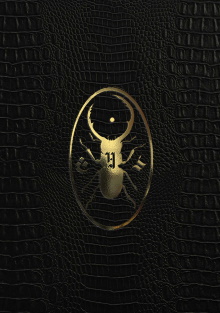
This was a bit of an impulse purchase, one of the rare occasions when email spam advertisements worked on me. While all fans of H.P. Lovecraft could not fail to know of the sinister King in Yellow, I realized that I had never read the original source itself by Robert W. Chambers. The text itself is free to read on Project Gutenberg but this edition brings together some very eerie illustrations by Samuel Araya with annotations and appendices to help the reader better understand the text itself so I thought I’d give in and go with that.
The original book is actually a collection of ten stories, though one of them is a series of poems. What surprised me is that the last three stories are not horror stories at all but romantic ones. In fact, even out of the stories are that properly macabre or weird, probably only around half are recognizably Cthulhu Mythos ones. For example, one story The Demoiselle d’Ys has references to places with names that could easily be Mythos-related but in terms of plot and theme, it feels like gothic horror or even a traditional ghost story complete with romance. I do like the sequences of poems though I don’t ordinarily read them. They share similar themes with The King in Yellow play itself and their palindromic repetition gives them an eerie power. Finally, there are of course the extensive annotations and appendices added by the editor. I found the explanations of the meanings of words that have now fallen out of current use to be more valuable than I had expected. The more scholarly notes about the origins of names and other works that may have influenced Chambers are interesting but I didn’t find them essential either.
Much more than Lovecraft, Chambers’ horror stories are mainly about madness and it may be arguable in some of the events recounted that there is nothing supernatural involved at all. The first story in the volume The Repairer of Reputations sets the tone with the first person perspective of a narrator that we soon realize is highly unreliable and not at all well in the head. Chambers’ prose is solid and highly descriptive, making it easy to imagine yourself walking on the late 19th century streets where most of these stories are set. However even in the Mythos stories, his protagonists, invariably male, are usually driven by love or lust. Indeed, though he is today mostly remembered for his contributions to the Mythos, he switched later to writing romantic fiction and made his fortune that way.. I think Lovecraft fans coming here may be perturbed to find that this is very different than what they expected, being closer to the psychological horror of Edgar Allan Poe instead of the more overt and monstrous horror of Lovedraft. Nevertheless after adjusting my expectations, I thoroughly enjoyed his brand of horror.
His romantic stories are another matter however and leave me with mixed feelings. The Street of the First Shell is actually an account of life in Paris under siege during the Franco-Prussian War. Coming on to this was a bit of a shock as it is a complete change in genre but it’s well written and filled with realistic detail. The next story after that is The Street of Our Lady of the Fields and that one is pure romance. While it is admittedly a solid story, by then I recognized that Chambers keeps reusing the same characters and settings and decor over and over again. Just as the author was himself an art student in fin de siècle Paris, so too are his stories filled with aspiring artists, the models that they frequently have affairs with, as well as the accoutrements of their trades such as palette-knives, brushes, and the like. It honestly gets repetitive. They are powerfully evocative in capturing the lives of these Bohemians as these artistic types let themselves be carried away by their intense emotions and infatuations. I’m very much reminded of Woody Allen’s Midnight in Paris here in its reminiscences of an era that no longer exists. While I don’t much care for the characters nor their loves, I still appreciated how Chambers is able to transport the reader into the lifestyle he knew so well and evidently remembered with such fondness.
Finally a note on the format of this annotated edition itself. The included illustrations are all fantastic of course but all of them are eerie ones reflecting this book’s reputation as a collection of horror stories which is not entirely the case. Then there’s how I bought this as digital ebook which comes as a PDF file. That fact means that it doesn’t repaginate automatically to fit different screen sizes. Add to that the annotations at the side and the result is that it’s unreadable on my phone which is why I had to read this on my computer. I think it’s probably best to buy this as a physical book in order to fully enjoy the illustrations and the annotations.
On the whole this book was very much not what I expected. I did enjoy both the horror stories and the non-horror ones, albeit in different ways. The romantic ones are good for getting a glimpse of Paris in the 1890s but I would not care to read quite so much of this style of writing. I think the mileage would vary according to the individual and so this would not be easy recommendation. Just be sure to know what you’re getting into,